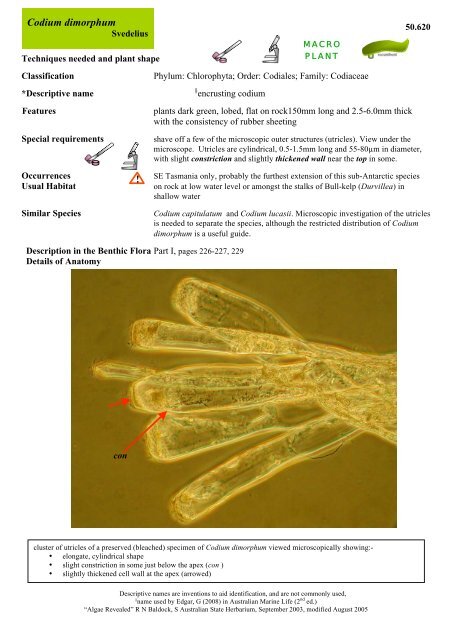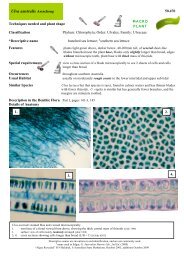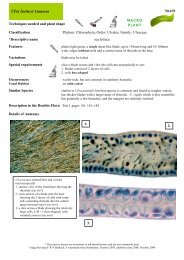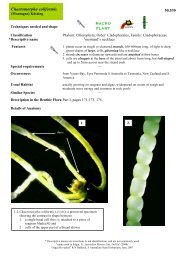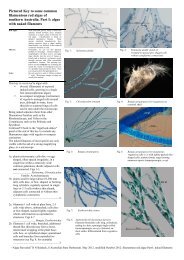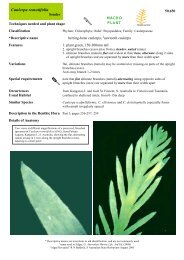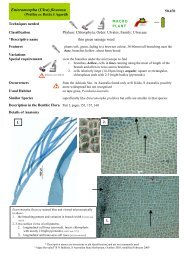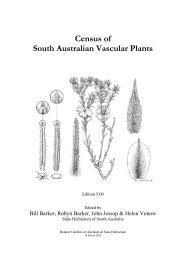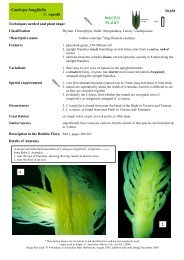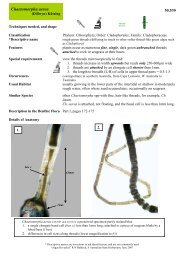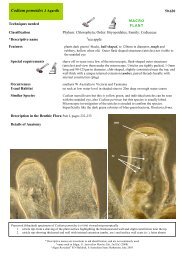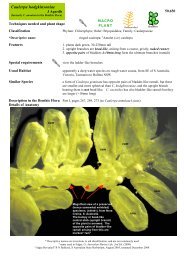Codium dimorphum !
Codium dimorphum !
Codium dimorphum !
Create successful ePaper yourself
Turn your PDF publications into a flip-book with our unique Google optimized e-Paper software.
<strong>Codium</strong> <strong>dimorphum</strong>SvedeliusTechniques needed and plant shapeMACROPLANTrecumbent50.620Classification*Descriptive nameFeaturesSpecial requirementsOccurrencesUsual HabitatSimilar Species!Phylum: Chlorophyta; Order: Codiales; Family: Codiaceae§ encrusting codiumplants dark green, lobed, flat on rock150mm long and 2.5-6.0mm thickwith the consistency of rubber sheetingshave off a few of the microscopic outer structures (utricles). View under themicroscope. Utricles are cylindrical, 0.5-1.5mm long and 55-80m in diameter,with slight constriction and slightly thickened wall near the top in some.SE Tasmania only, probably the furthest extension of this sub-Antarctic specieson rock at low water level or amongst the stalks of Bull-kelp (Durvillea) inshallow water<strong>Codium</strong> capitulatum and <strong>Codium</strong> lucasii. Microscopic investigation of the utriclesis needed to separate the species, although the restricted distribution of <strong>Codium</strong><strong>dimorphum</strong> is a useful guide.Description in the Benthic Flora Part I, pages 226-227, 229Details of Anatomyconcluster of utricles of a preserved (bleached) specimen of <strong>Codium</strong> <strong>dimorphum</strong> viewed microscopically showing:-• elongate, cylindrical shape• slight constriction in some just below the apex (con )• slightly thickened cell wall at the apex (arrowed)Descriptive names are inventions to aid identification, and are not commonly used,§name used by Edgar, G (2008) in Australian Marine Life (2 nd ed.)“Algae Revealed” R N Baldock, S Australian State Herbarium, September 2003, modified August 2005
Magnified view of <strong>Codium</strong><strong>dimorphum</strong> Svedelius,(A53000), from WineglassBay, TasmaniaDescriptive names are inventions to aid identification, and are not commonly used,§name used by Edgar, G (2008) in Australian Marine Life (2 nd ed.)“Algae Revealed” R N Baldock, S Australian State Herbarium, September 2003, modified August 2005


